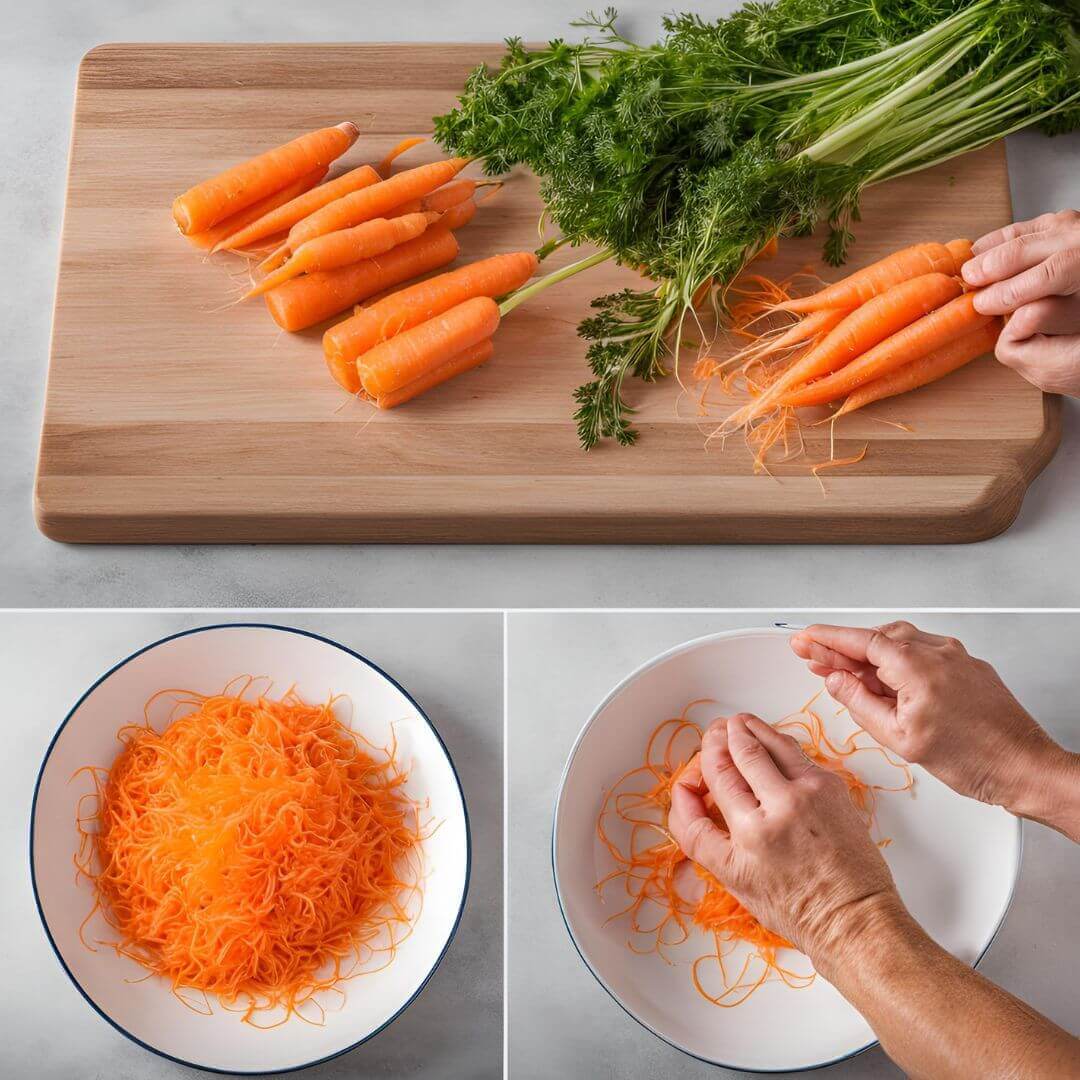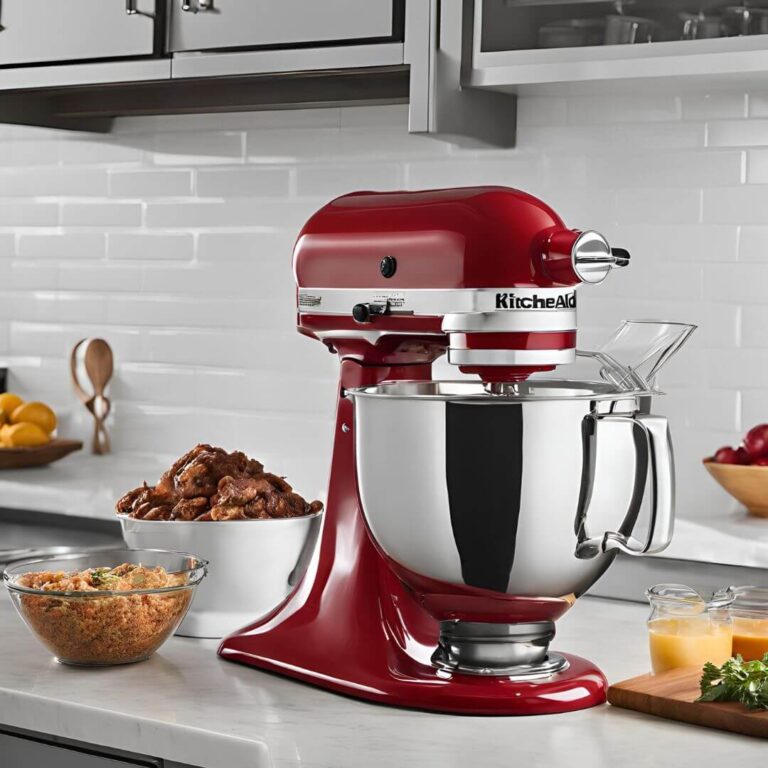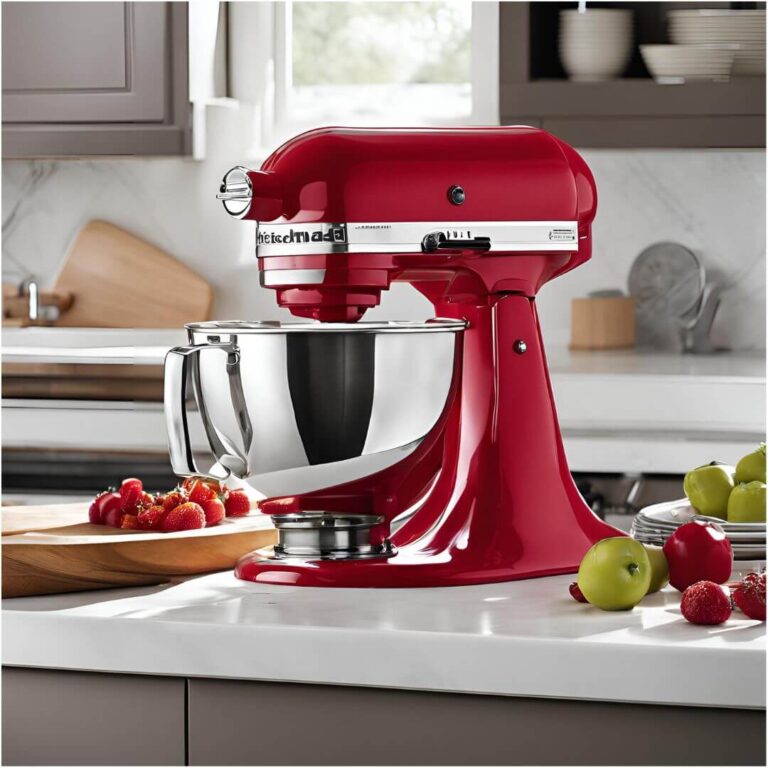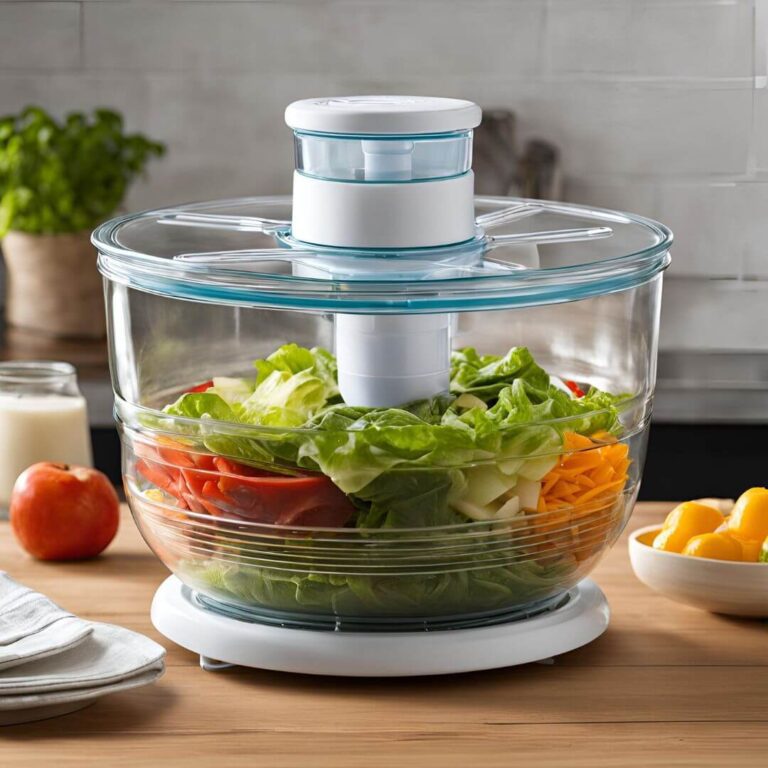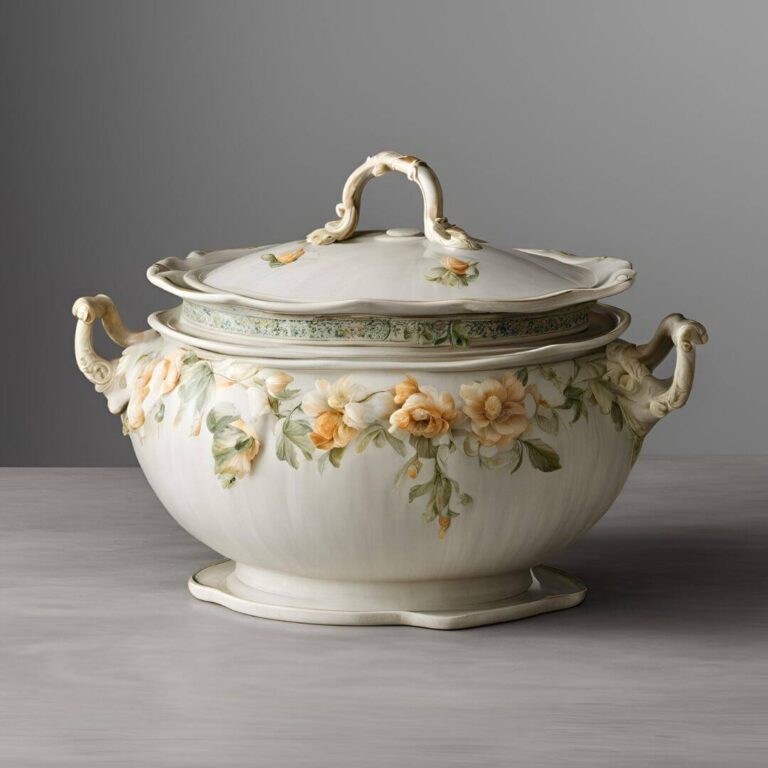How to Grate Carrots: 6 Easy Tips and Techniques
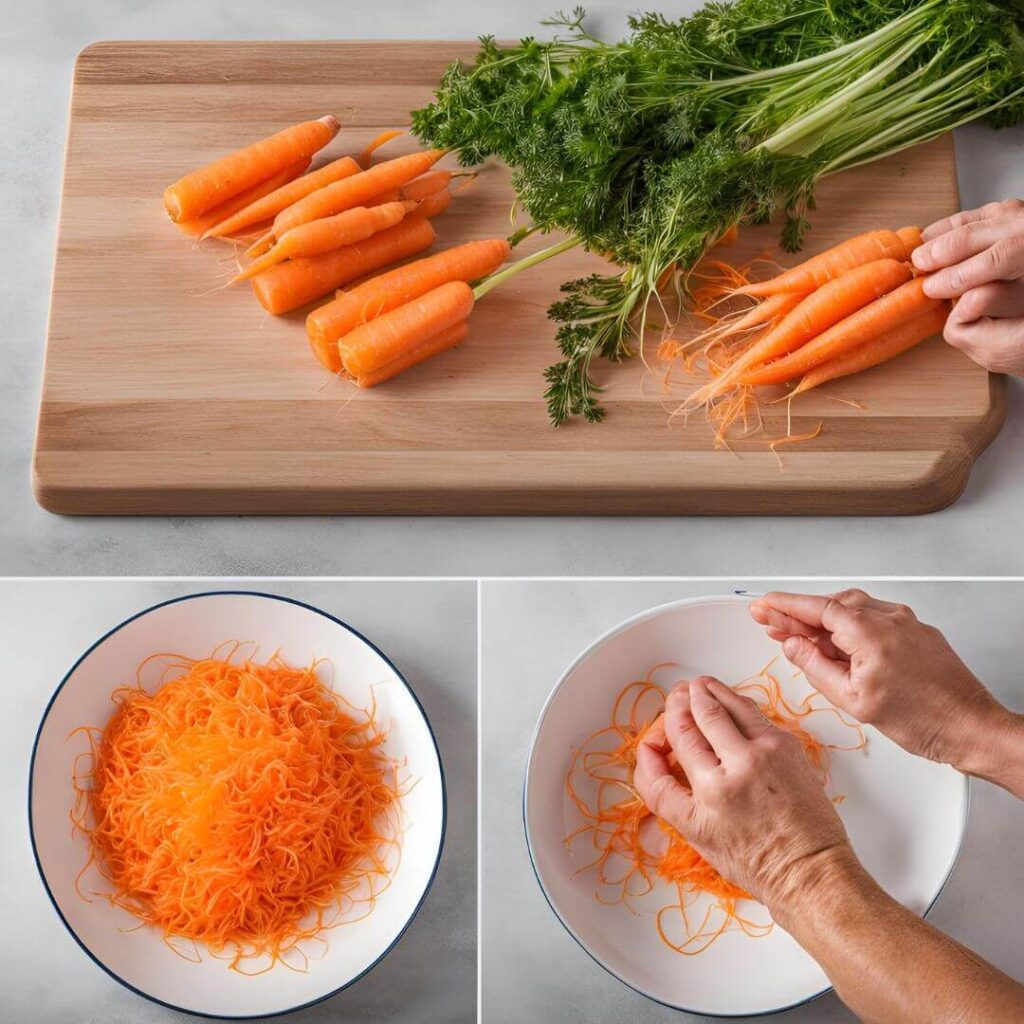
Learning how to grate carrots effectively can transform your cooking, making meal prep faster and easier. Grate carrots efficiently by using a box grater or a food processor. Ensure carrots are clean and peeled for best results.
Grating carrots is a simple but essential kitchen skill. Finely grated carrots add texture and flavor to a variety of dishes. Whether preparing a salad, carrot cake, or stir-fry, mastering this technique can improve your culinary creations. Using the right tools and methods ensures consistency and comfort.
Here are six easy tips and tricks to help you grate carrots like a pro. Every step is essential, from selecting the right carrot to using the proper grater. Let’s explore these tips to make your grating process easy and efficient.
Selecting The Right Carrots:
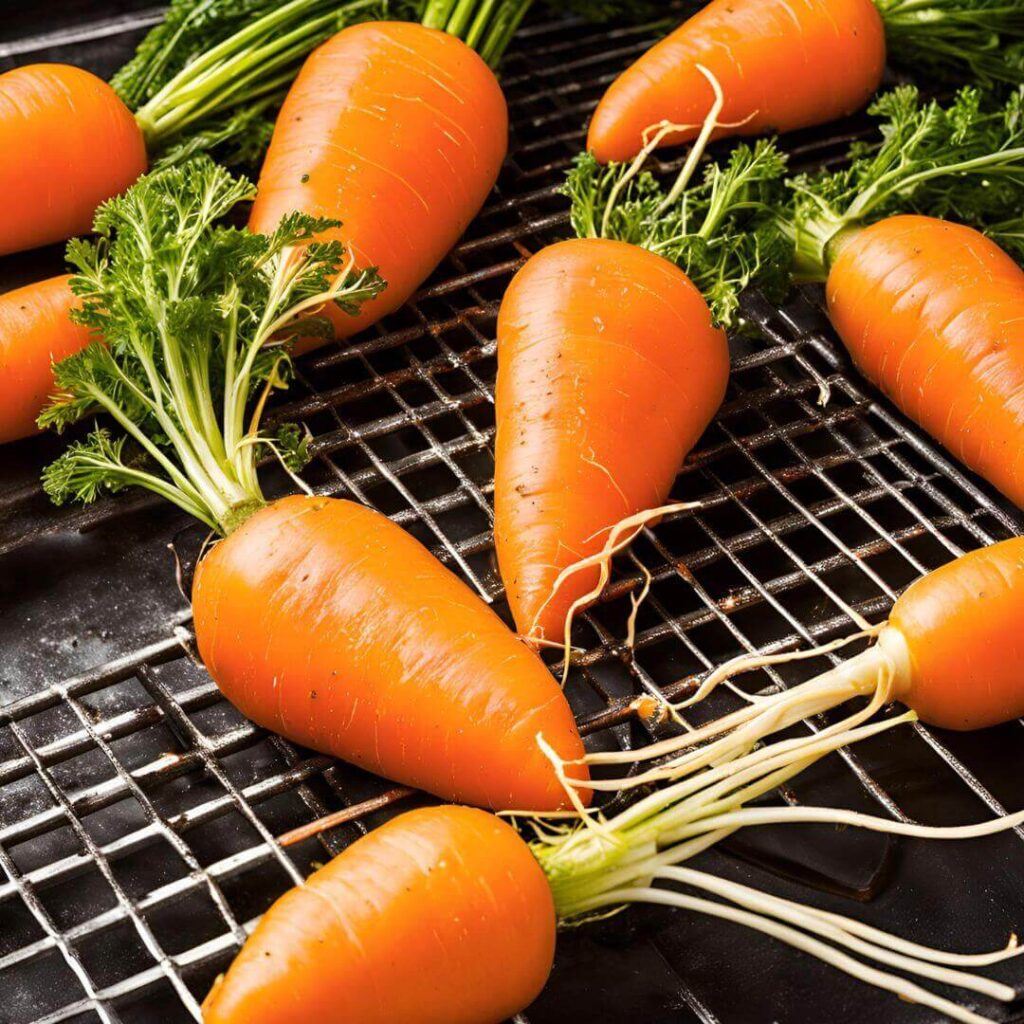
Grated carrots can enhance your meal, adding both flavor and nutrition. But before you begin, choosing the right carrot is crucial. Every detail, from freshness to size, can affect your grilling experience. In this section, we will guide you on how to grate carrots properly.
- Freshness And Quality:
Always prioritize freshness and quality when selecting carrots. Fresh carrots not only taste great, but they’re also easy to grate. Here are some critical indicators to watch for:
- Bright Orange Color: Fresh carrots should be vibrant, bright orange. Dull or pale carrots may be old.
- Firm Texture: Fresh carrots feel firm to the touch. Avoid carrots that feel soft or have wrinkles.
- Green tops: If the carrot tops are still attached, they should be green and not wilted.
Check for any visible damage or discoloration. Carrots with cracks, spots, or blemishes may not be fresh. Smell the carrots. Fresh has a light, sweet scent.
| Quality Indicator | Description |
| Color | Bright Orange |
| Texture | Firm |
| Tops | Green and Fresh |
| Smell | Mild and Sweet |
Choose organically grown carrots if possible. They are often fresh and free of harmful pesticides. Fresh carrots are not only easier to grate but also more nutritious.
- Size And Texture:
The size and texture of the carrot play an essential role in the grating process. Here’s what to consider:
- Medium Size: Medium-size carrots are ideal for grating. They fit well in your hand and are easy to handle.
- Uniform Shape: Even grating ensures that the carrots are uniform in shape. Avoid irregular shapes.
- Smooth skin: A smooth texture in carrot skin makes the grating process smoother and more efficient.
Avoid carrots that are too large or too small. Large carrots can be cumbersome and pliable, while small carrots can be challenging to hold during grating.
| Size Indicator | Description |
| Medium Size | Ideal for Grating |
| Uniform Shape | Even Grating |
| Smooth Skin | Efficient Grating |
Carrot flesh texture is also essential. Choose carrots that are tender but firm. This ensures that the grated pieces come out uniformly and smoothly. Grating carrots becomes a breeze with the right size and texture, making your dishes look and taste better.
Preparing The Carrots:
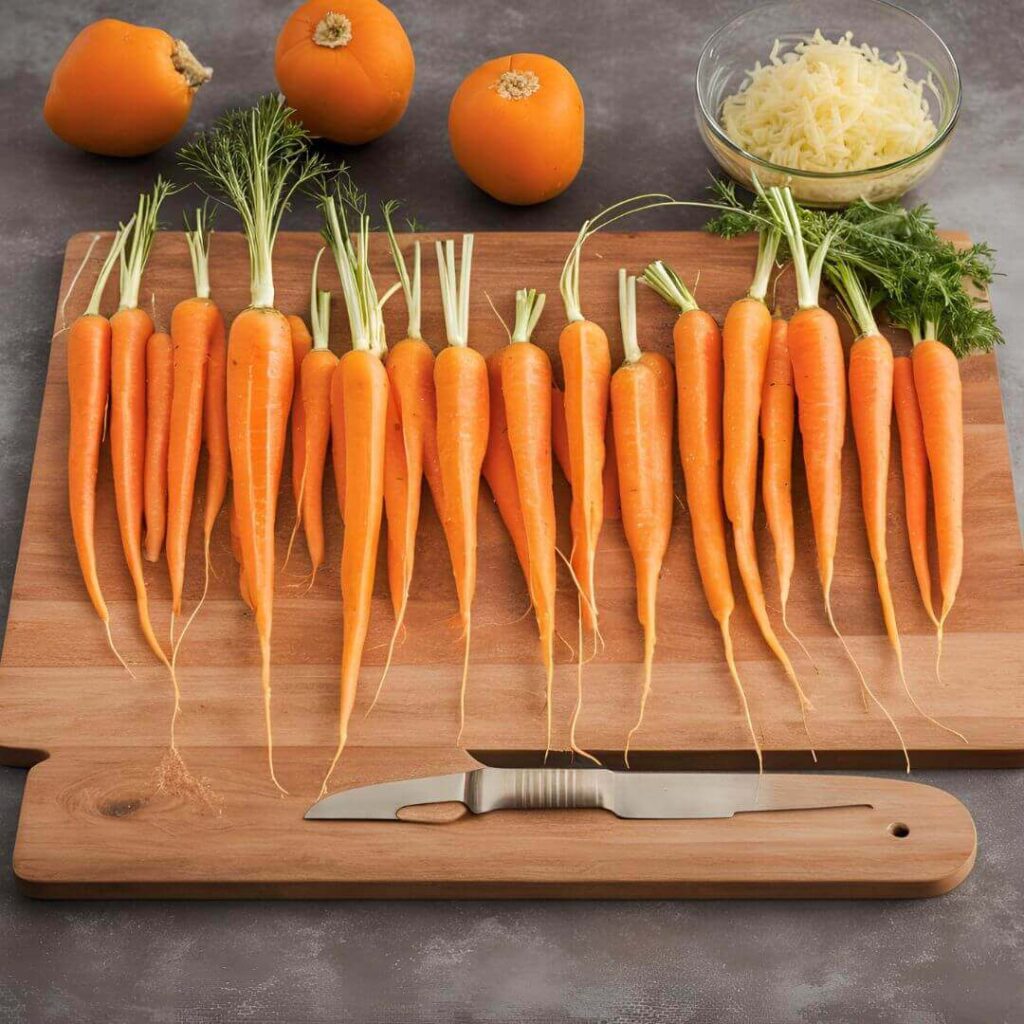
Grating carrots might seem simple, but a few tips can make it easier and faster. The first step is preparing the carrots. Proper preparation ensures your carrots are clean, safe, and ready for grating. Let’s dive into the essential steps to know how to grate carrots.
- Washing And Peeling:
Start by washing your carrots thoroughly. Use cold water and a scrub brush to remove dirt and debris. This will kill the harmful bacteria and make the carrots safe.
Next, it’s time to peel the carrots. Peeling helps remove the outer layer, which can be challenging and less sweet. Use a sharp vegetable peeler for this task.
- Hold the carrot tightly at one end.
- Run the pillar from top to bottom.
- Turn the carrots and repeat until all the skin is gone.
Peeling carrots gives them a smoother texture. This makes the grating easier and the result more visually appealing.
- Trimming The Ends:
Once your carrots are washed and peeled, the next step is to trim the ends. Trimming is challenging, removing fibrous parts that are difficult to grate.
Use a sharp knife for this task. Place carrots on a cutting board and follow these steps:
- Trim about 1/4 inch from the top.
- Trim about 1/4 inch from the bottom.
- Make sure the cut surfaces are clean and even.
Properly trimmed carrots are easy to handle and grate. Trim also ensures a consistent texture in grated carrots.
Following these steps, you prepare your carrots for grating efficiently and effectively.
Choosing The Grating Tool:
Grating carrots can be easy if you have the right tools. Choosing the grating tool is crucial to achieving the perfect texture for your dish. Whether you’re making a salad, cake, or any other recipe, the tool you use can make a big difference. Here, I explore two popular grating tools: the box grater and the microplane grater. Let’s dive into their characteristics and benefits to know how to grate carrots.
- Box Grater:
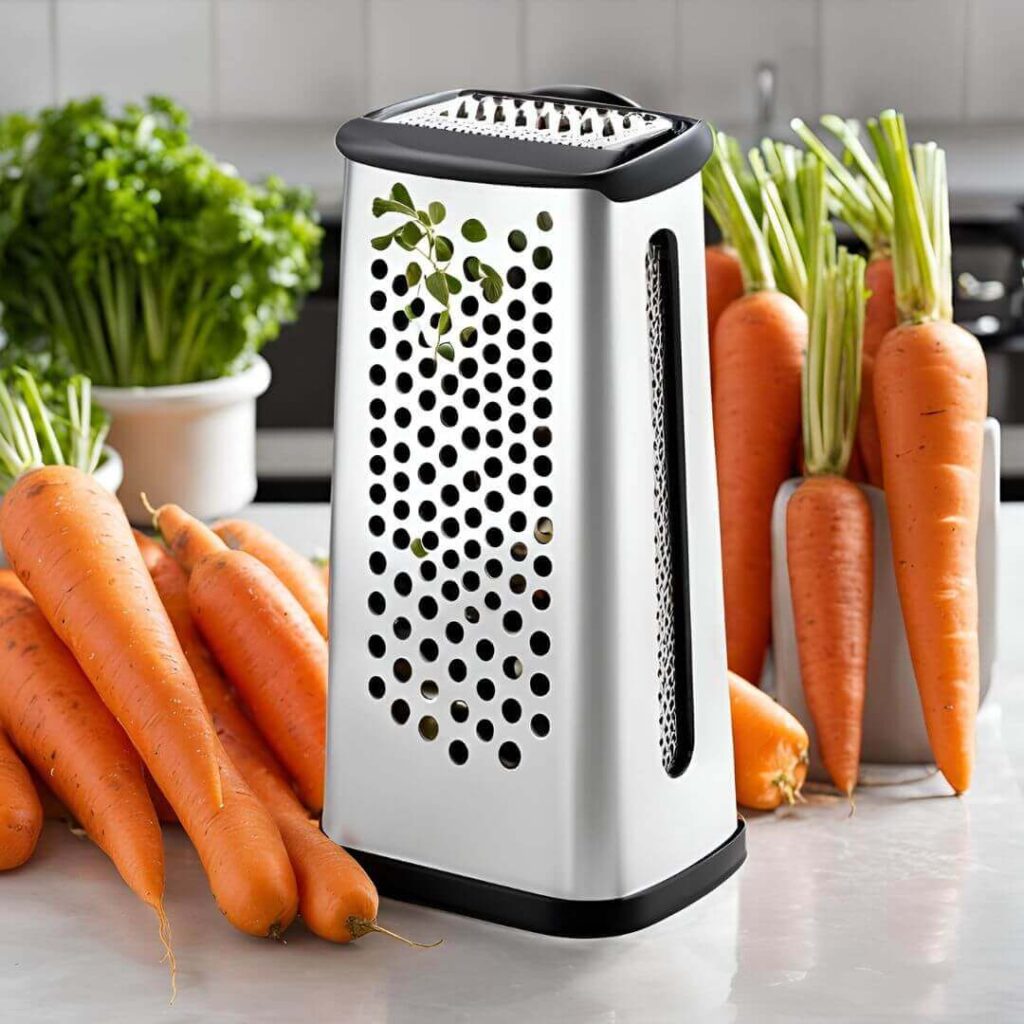
A box grater is a versatile kitchen tool that many households have on hand. It usually has four sides, each with a grating surface of different sizes. You can use it for many other purposes than just grating carrots. Here are some key points:
- Four Sides: Each side of the box grater has a different grate size. You can choose from coarse, medium, refined, and slicing options.
- Solid design: The box grater stands upright, making it easy to grate large amounts of carrots quickly.
- Ease of use: Hold the grater in one hand and move the carrot against the grate surface.
Here’s a quick comparison table to highlight the features of a box grater:
| Feature | Description |
| Four Grating Surfaces | Coarse, medium, refined, and slicing |
| Material | Usually stainless steel |
| Stability | Stands upright, easy to use |
A box grater is an easy way to grate carrots for any recipe. Its multiple grating surfaces make it a versatile kitchen tool.
- Microplane Grater:

A microplane grater is another excellent tool for grating carrots. It is famous for its razor-sharp blade and fine grating surface. Here are some benefits:
- Fine Grating: The Microplane grater produces fine carrot slices, perfect for delicate recipes like carrot cake.
- Compact Size: It is smaller than a box grater, making it easy to store and handle.
- Precision: Sharp blades allow for precise grating, giving consistent results every time.
Let’s take a look at the features of the Microplane grater in a table:
| Feature | Description |
| Grating Surface | Fine, razor-sharp blades |
| Material | Usually stainless steel with a plastic handle |
| Size | Compact and easy to store |
The microplane grater is ideal for recipes that require finely grated carrots. Its compact size and sharp blade make it a favorite among chefs and home cooks.
Grating Techniques:
Grating carrots can be a simple but essential skill in your kitchen. Whether making a salad, a carrot cake, or adding some crunch to your meal, knowing the proper grating techniques can make all the difference. I’ll explore two popular methods: a box grater and a food processor. These techniques will help you achieve perfect, uniform carrot slices every time.
- Using A Box Grater:
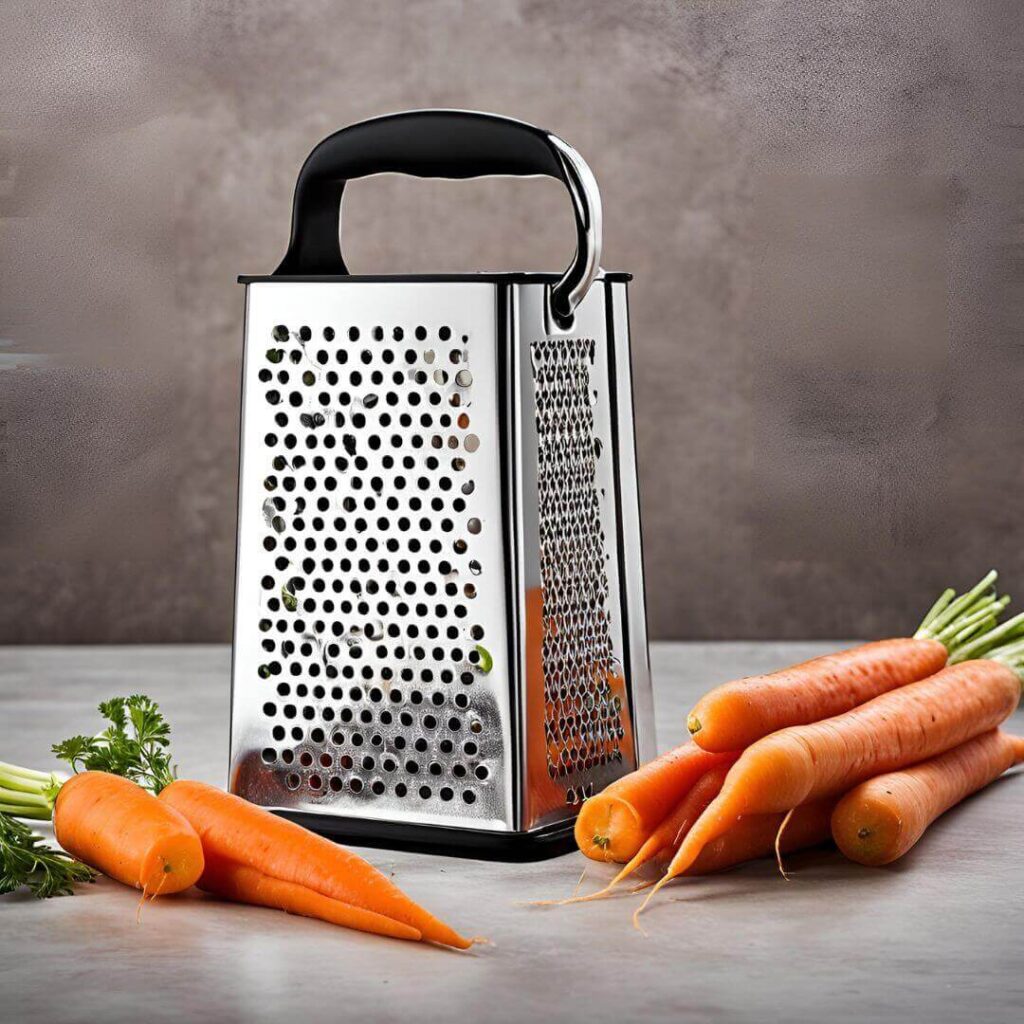
A box grater is a versatile tool found in most kitchens. Grating carrots using a box grater is easy and does not require electricity. Follow these guides for the ideal results:
- Choose the right side: A box grater usually has four sides with different-sized holes. Grate the carrots on the side with the medium-sized holes.
- Prepare the carrots: Wash and peel the carrots. Trim both ends to form a flat surface.
- Grate carrots: Hold the box grater firmly with one hand. On the other hand, rub the carrot against the grater in an up-and-down motion.
Here are some additional tips for using a box grater:
- Safety first: Always be careful with your fingers near the grater.
- Consistency: Apply consistent pressure to ensure uniform pieces.
- Clean: Wash the grater immediately after use to prevent the carrot bits from drying out and sticking.
Using a box grater is ideal for smaller amounts of carrots. It’s quick and easy, making it perfect for everyday cooking.
- Using A Food Processor:
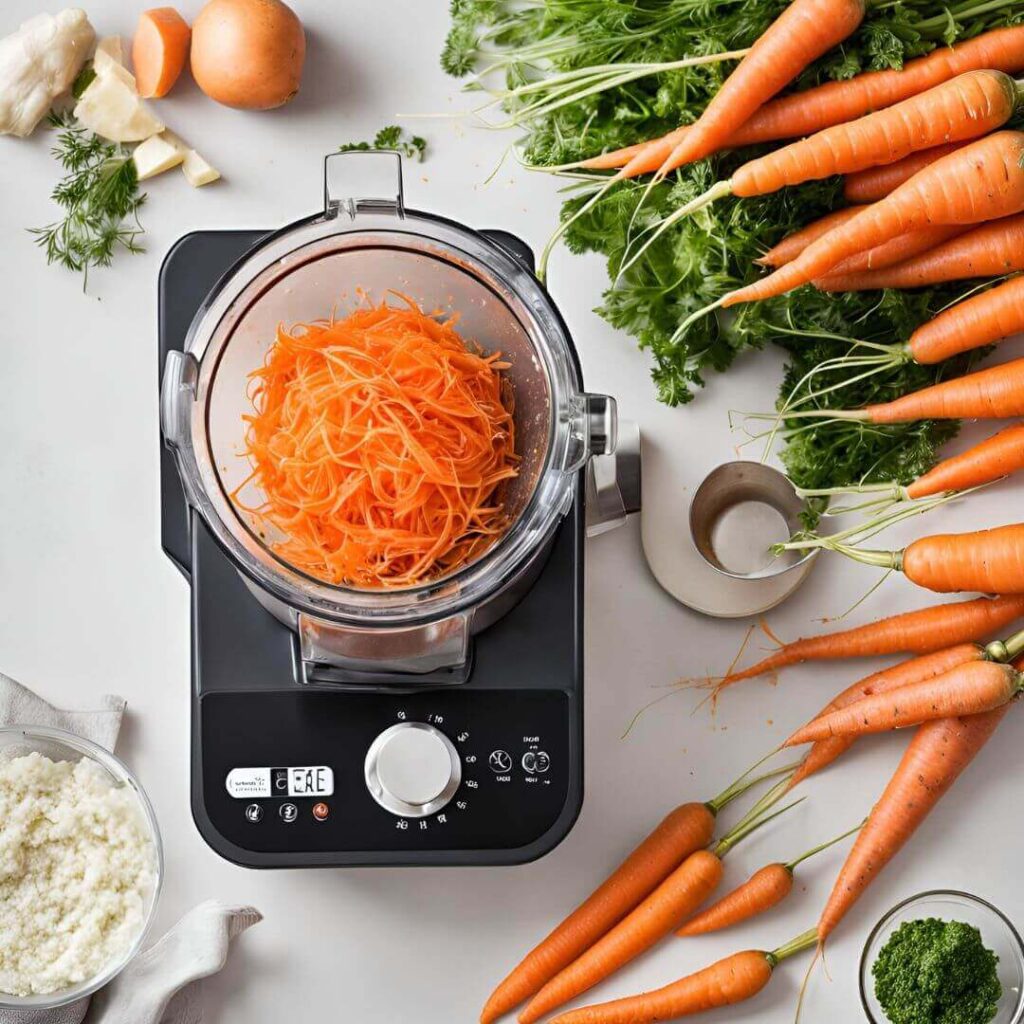
A food processor can save you time and effort, especially when grating large quantities of carrots. Here’s how to use it effectively:
- Prepare the carrots: Wash, peel, and cut the carrots into small pieces, about 2-3 inches long.
- Assemble the food processor: Attach the grating accessory to the food processor securely. Make sure all parts are securely in place.
- Grate Carrots: Feed the carrot slices through the feed tube while the processor runs. Use the pusher to guide the carrot toward the blade.
Benefits of using a food processor include:
- Speed: Grates carrots in seconds, saving time.
- Consistency: Provides uniform pieces effortlessly.
- Efficiency: Ideal for large batches of grated carrots.
Cleaning a food processor can be more challenging than cleaning a box grater. Separate and wash the carrots thoroughly to remove all residue. Even so, the time saved on the grill makes it worthwhile, especially for larger cooking projects.
Ensuring Safety:
Grating carrots can be a fun and rewarding kitchen activity. But ensuring safety is very important. Proper precautions can avoid accidents using a box grater or food processor. Let’s explore essential tips for grating carrots safely.
- Protecting Your Fingers:
Keeping your fingers safe while grating is essential. Here are some tips to keep them from getting ripped off or cut:
- Use finger guards: Many graters come with finger guards. It holds the carrots while you grate.
- Grip the carrot correctly: Grip the carrot by one end. Grate until you reach the last inch, keeping your fingers away from the blade.
- Wear cut-resistant gloves: These gloves provide extra protection and are especially useful for children or beginners.
- Grate slowly: Take your time. Rushing increases the risk of injury.
Here is a usual table to summarize these tips:
| Tip | Details |
| Finger Guard | Use the guard provided with your grater. |
| Proper Grip | Hold the carrot at one end and stop grating early. |
| Cut-resistant Gloves | Wear gloves to protect your hands. |
| Grate Slowly | Take your time to avoid accidents. |
- Maintaining Stability:
Ensuring that the grate remains stable is another crucial aspect of safety. Here are some tricks to keep your grate steady:
- Use a non-slip mat: Place a non-slip mat under the grate to prevent it from slipping while you work.
- Secure the grater: Some graters have suction cups at the base. If you have one, use it to hold the grater on the countertop.
- Hold the grater firmly: Keep one hand on the grater while using the other hand to grate. This ensures better control.
- Choose the suitable surface: Grate on a stable, flat surface. Avoid grating on uneven or slick surfaces.
Here are these tips in an organized table:
| Tip | Details |
| Non-slip Mat | Place under the grater to prevent slipping. |
| Secure Grater | Attach it to the countertop using suction cups. |
| Firm Grip | Grip the grater with one hand while using the other hand to grate. |
| Right Surface | Grate on a stable, flat surface. |
Storing Grated Carrots:
Grating carrots can be a fun and rewarding task. Once you’ve mastered the art of grating, the next step is to store them. Proper storage ensures that your grated carrots stay fresh and tasty. Let’s explore the best ways to store your grated carrots.
- Immediate Use:
Grated carrots immediately are the best way to retain their full flavor and nutritional value. If you plan to use them right away, follow these simple steps:
- Place the grated carrots in a clean bowl.
- Cover the bowl with a damp paper towel. This keeps the carrots moist.
- Use carrots within a few hours for the best flavor.
For those preparing meals immediately after grating, consider using grated carrots in salads, sandwiches, or garnishes. Here’s a quick table to help you decide immediately how to use them:
| Dish | Best Use |
| Salads | Freshly grated carrots add crunch and color. |
| Sandwiches | Sprinkle on top for added texture. |
| Garnish | Enhance soups and main dishes. |
Be sure to cover the carrots and keep them moist to maintain their freshness until they are ready to use.
- Refrigeration:
Refrigeration is essential if you want to store grated carrots for later use. To ensure your carrots stay fresh, use these steps:
- Place the grated carrots in a container with an airtight seal.
- Add a few drops of water to keep them moist.
- Seal the container tightly.
- Label the container with the date.
- Refrigerate for up to a week.
Refrigerating grated carrots can increase their shelf life. Here are some additional tips to make sure they stay fresh:
- Before using, inspect for any signs of spoilage.
- Avoid storing near strong-smelling foods to prevent flavor absorption.
- Stir the carrots occasionally to distribute the moisture evenly.
Here is a quick table to summarize the refrigeration process:
| Step | Action |
| 1 | Transfer to an airtight container |
| 2 | Add a few drops of water |
| 3 | Seal tightly |
| 4 | Label with date |
| 5 | Refrigerate for up to a week. |
Following these steps, you can enjoy fresh, grated carrots days after grating. Correct storage is critical to maintaining their flavor and nutritional benefits.
Utilizing Grated Carrots:
Grating carrots is a simple yet versatile kitchen skill that can elevate your meals to a new level. Once you master the art of grating carrots, you’ll find countless ways to incorporate them into your meals.
Grated carrots are a fantastic addition to many recipes. Whether adding a fresh crunch to salads or enhancing baked goods with natural sweetness, they’re a great addition to any kitchen. Let’s explore creative and delicious ways to use grated carrots in your kitchen.
- In Salads And Slaws:

Adding grated carrots to salads and slaws is a great way to introduce a delightful crunch and burst of color. Carrots pair well with various greens, fruits, and dressings, making them versatile for your salad dressing.
- Classic coleslaw: For a refreshing side dish, combine shredded cabbage, a tangy dressing, and grated carrots sprinkled with salt and pepper.
- Asian-Inspired Salad: Combine julienned cucumber, bell peppers, and grated carrots with a sesame-ginger dressing to create a vibrant and flavorful salad.
- Sweet and savory carrot salad: Toss grated carrots with raisins, chopped nuts, and a drizzle of honey for a lovely twist on a traditional salad.
Grated carrots also work wonders in grain-based salads. Add them to a quinoa or couscous salad for an extra layer of texture and nutrition. Carrot’s natural sweetness balances well with the savory and tangy ingredients, making it a perfect addition to various salad recipes.
Here’s a simple recipe to get you going:
| Ingredients | Quantity |
| Grated Carrots | 1 cup |
| Shredded Cabbage | 2 cups |
| Mayonnaise | 1/2 cup |
| Apple Cider Vinegar | 2 tbsp |
| Salt and Pepper | To taste |
- In Baking Recipes:

Grated carrots are an excellent ingredient for baking recipes. They add moisture, sweetness, and nutrition to baked goods, from classic carrot cakes to muffins and breads. The possibilities are endless.
- Carrot Cake: The classic carrot cake is a favorite for a reason. Grated carrots add moisture and sweetness, while spices like cinnamon and nutmeg enhance flavor.
- Carrot Muffins: Combine grated carrots with whole wheat flour, oats, and honey for a healthy and delicious breakfast.
- Carrot Bread: Grate carrots in a quick bread recipe for moist and flavorful bread that’s perfect for a snack or breakfast.
You can also use grated carrots in cookies to add flavor and a subtle crunch. Add grated carrots to your favorite oatmeal cookie recipe for a healthy twist. Carrots’ natural sweetness allows you to cut down on added sugar, making for a more nutritious treat.
Here’s a simple carrot muffin recipe to try:
| Ingredients | Quantity |
| Grated Carrots | 1 cup |
| Whole Wheat Flour | 1 cup |
| Rolled Oats | 1/2 cup |
| Honey | 1/4 cup |
| Baking Powder | 1 tsp |
| Salt | 1/2 tsp |
| Egg | 1 |
| Milk | 1/2 cup |
Related Questions:
What’s The Easiest Way To Grate Carrots?
The easiest way to grate carrots is to use a box grater or a food processor with a grater attachment. First, peel and wash the carrots. Then, grate the carrots against a grater or put them in a food processor.
Slide the carrots back and forth, or let the processor handle it. This method gives you evenly grated carrots quickly and with little effort.
How Do Grated Carrots Differ From Shredded Carrots?
A grater cuts carrots into tiny, delicate pieces, creating a smooth texture. To give carrots more texture, shredded carrots are cut into long, thin strips with a box grater or food processor.
Although they look similar, grated carrots are finer and softer, while shredded carrots are more textured and slightly crunchy.
How Do You Shred Carrots Hack?
To quickly shred carrots, use a box grater or a food processor. First, peel and wash the carrots. If using a grater, grate the carrots on the rough side. For a food processor, chop the carrots into small pieces and use the grating blade.
Both methods are quick and easy, making it easy to add chopped carrots to salads or recipes.
Conclusion:
With these six tips, it’s easy to master how to grate carrots. Your dishes will be fresher and more vibrant. Practice makes perfect, so keep experimenting. Soon, you will find your favorite technique. Enjoy the process and the delicious results.

